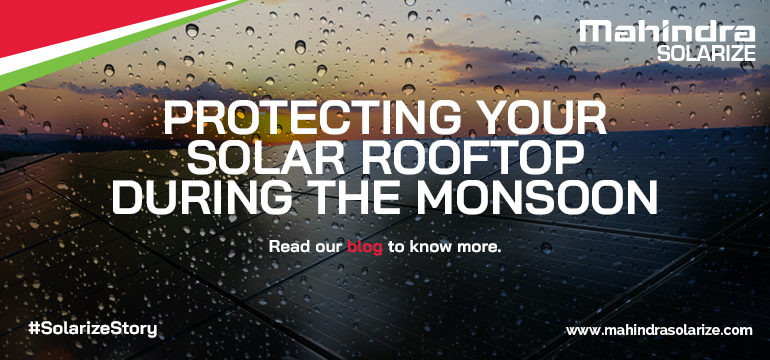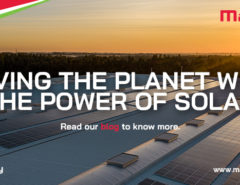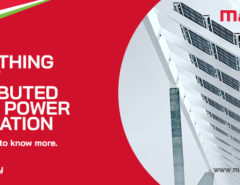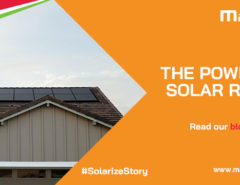Dealing with the monsoons
Changes in nature are inevitable and we cannot control natural calamities, but we can arm ourselves with knowledge. Preparedness, when properly pursued, can help us prevent major losses during such events.
Solar installations are exposed to many extreme weather conditions and natural calamities. Heavy rainfalls and thunderstorms effect majority of regions. Therefore, we have attempted to compile some of the major preventive measures to help you prepare your Rooftop Solar PV installation site for heavy monsoons conditions.
Primarily, ensure that your PV system installer and their team is trained and certified professionals. A System installed by a trained installer will ideally show both quantity and quality performance.
Secondly, Optimum design and material quality should be implemented at the time of installation. The installer should ensure that the design, materials, products, processes, and services are fit for their purpose.
Most importantly, the installer should share safety guidelines and emergency contact details with the customer.
It is also recommended to install a weather monitoring app that provides users to have real-time access of weather data from different locations in areas covered by mobile network.
Here are some simple preventive steps to Keep Your Solar Safe when during monsoons:
1. Preventing damage from Lightning:
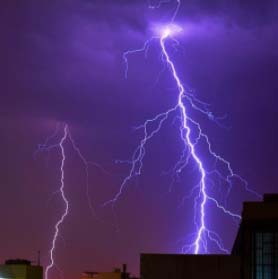
Lightning strikes and related electric discharge are one of the top reasons for sudden, unexpected failures of Solar PV systems.
A common myth is that only a large visible lightning strike at close vicinity of the solar PV system can cause damage, whereas, high voltage surges or transient currents, caused by invisible strikes at a distance from the solar system, may cause damage too. Surprisingly, even lightning between clouds can be often enough to cause significant damage.
The purpose of a lightning protection system is to
- protect structures against fire or mechanical damage, and
- to prevent injury to persons in buildings.
Ref:
An overall lightning protection system is composed of external protection (lightning protection/earthing) and internal protection (surge protection).
A. Grounding
Can we stop Lightning Surge? – No
But by implementing a proper system grounding, we can avoid any damage to the solar PV system components.
Grounding is a technique to connect a part of the system electrically to the earth by means of a conductive material and is the key technique in Solar Lightning Protection. The main aim of grounding is to provide a straight, low resistive path for very high currents to enter the earth and be absorbed without harming equipment or people.
There are many ways to achieve proper grounding but one of the most common method is using ground rods.
In small solar systems, grounding may be implemented by inserting into the earth an 8 ft long metallic ground rod made of conductive material (usually Copper or Aluminium). Copper wire is preferred. Using thick wires you can connect all conductive parts of the device to this rod. When hammering Cu or Al rod into the ground, make sure most of its surface area is covered with moist soil. This reduces resistance and helps in better grounding.
For larger systems, it is a good idea to create a grounding grid. A grounding grid is an interconnection of several ground rods, approximately 10 ft apart from each other and connected by the help of a bare copper conductor (min. size is 16 mm2). Once the grid is formed, grounding is achieved by connecting all conductive parts of the system to the ground grid using thick wires.
Some of the important equipment that should be grounded is –
- Aluminum frame of the solar modules
- Outer frame of the inverter
- Negative side of the power system
- All the wiring of the system
One way of grounding the wiring is by running it in a metallic conduit and then burying it underground. Other way is if you are running cable trays to run the cables, ground the cable trays along their entire length.
Make sure there are no sharp bends in ground wires. In case of sharp bends, surge can jump from one wire to other. Stainless steel fasteners, which reduce the potential for corrosion.
There is potential of injury and shock while doing any electrical work. If you are unsure about your ability to properly wire the system, hire a licensed electrical contractor or electrician.
Note: Lightning arrestors and surge protection devices are designed to protect electronic equipment by absorbing electrical surges. However, these devices cannot substitute for good grounding, in fact they function only in conjunction with effective grounding.
B. Surge Protection Devices
Surge arrestors are used to protect the electrical installations and equipment from electrical surges and transient voltage caused by electrical faults, switching, short circuits, sparks and lightning etc. Surge protectors should be installed at both ends of any long wire run that is connected to any part of your system.
Be sure to use the appropriate arrestors as per your system requirement at the time of designing.
C. Lightning Arrester
This is used to protect the electric circuit and connected devices from the lightning strikes having high voltage transient surges. Lightning arresters are installed to ground the harmful effects of lightning spikes.
D. Lightning Rod
This device is installed on the height location i.e. top of the building to provide a path to ground the lightning strokes. The lightning rod protects the structure from lighting surges.
Note: A surge arrester can be used as a lightning arrester but lightning arrester can’t be used as a surge arrester.2.
2. Switch -off the PV system.
We recommend that you turn off your PV system during extreme weather condition. Switch off the Inverters and the MCB in the ACJB panel until the extreme weather conditions recedes.
Remember in such circumstance – Don’t touch the Solar system or wiring, even if you find any damage.
In case your area loses electricity, your PV system will turn itself off automatically. However, the PV modules hold electric current even when they are turned off at such conditions.
Avoid touching modules to prevent risk of shock or injury. Once power is restored, the PV system will turn on automatically. At this point, check the electrical output of the system and make sure it is at normal levels.
3. Structures – Protect your system for heavy winds
Ensure proper torqueing and tightening of structures is done at the time of installation. Routine maintenance is recommended for structures to ensure proper upkeep and damage prevention during extreme weathers.
A. Structure supports
a. Ensure that the module clamps are properly tightened especially if you are using an elevated structure.
b. Modules clamps are the small metal clips that keep your system bolted to the suture. Tight clamps ensure the panels and don’t wobble and slip.
C. For RCC roof
- Check that Wind Shields are properly installed.
- Ensure all the nuts and bolts, especially for the wind shields, are properly tightened.
- Ballast are the concrete block which keep support structure place on the ground. Ensure that the ballasts (Concrete blocks) are properly placed and aligned.
- Ensure that the module clamps are properly tightened.
d. For metal roof
Ensure that the module clamps are properly tightened.
B. Rust protection
It is recommended to use one type metal for fabrication. Metal used should be galvanically compatible. It is important to insulate metals and apply coatings with caution. Use of inhibitors can be beneficial. Avoid threaded joints for materials.
4. What happens if your Solar System gets impacted –
Natural calamities are inevitable. We can only try to minimise the impacts due to these. Having Insurance cover for your sytem is therefore recommended.
Insurance
- Check if your home insurance can cover the solar system or not.
- Contact your insurance agent and make sure you have adequate coverage for the full replacement cost of your solar system.
Solar energy isn’t a passing fad. It’s the key to a future of lower electricity bills and a cleaner environment. This article is only an attempt to help you brace for the monsoons. Lastly, one of the most ideal way to make sure your solar investment lasts for decades, is to partner with an experienced and reputable contractor that uses quality parts.
Remember , Prepare and prevent is better than repair and repent.
If you have any additional queries, please write to zolario@mahindra.com
To know more about solar click on the link here – __________________________ for more blogs
Adding useful links here- IMD weather and warnings https://mausam.imd.gov.in/imd_latest/contents/subdivisionwise-warning.php
Reference: Ministry Of New & Renewable Energy (MNRE) https://solarrooftop.gov.in

